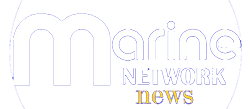World Aids to Navigation Day: Ensuring safe navigation, safe shipping
By Olumide Omotoso
We are celebrating the World Aids to Navigation Day declared by the International Association of Lighthouse Authority (IALA) to hold on July1, with the aim of creating greater awareness among mariners and members of the larger public on the importance of Aids to Navigation to ensure a safe and efficient navigation, which in turn supports safe shipping.
IALA is the world body known for the regulation of Aids to Navigation worldwide, just as there is the International Maritime Organisation and the International Hydrographic Association. These are world bodies that control regulation relating to shipping and maritime in general.

This is important because, you need a body for standardisation and for regulation. There are standards to follow. And shipping is international. When a mariner sees anything in water, he should be able to identify it and be guided.
There are different types of aids to navigation, and different types are used in different parts of the world. The world is divided into regions and everybody has its own class of aids to navigation and buoys that it uses. So when you go to that country, this is the type approved for them.
As a marine consultant and expert, we have decided to visit the Lighthouse and some Aids to Navigation and Navigational Aids. So, we took a trip to see the light house in Lagos and see some buoys on the Lagos waters.
It is amazing that on this day we decided to do this. It is quite fascinating. We hope government keys into it to make it a better celebration that stakeholders in the industry can come celebrate the world aids to navigation day.
The difference between Aids to Navigation and Navigational Aids
Aids to Navigation are things that aid navigation such as the buoy. When a mariner sees it, he knows what direction to face, how to act. Basically, when we talk about aids to navigation it is about buoys on water, the ones on the portside or the starboard.
IALA standards uses different colours to depict where your channel is in water. It is more like a boundary that shows that while you are entering the ports; the red buoy would be at the portside, while the green buoy would be at your starboard. So, that is a characteristic.
These are rules every navigator knows and whenever you are approaching the fairway buoy, which is the leading buoy and takes you to the other types of buoys, the portside and the starboard buoys. It defines the boundaries of the channel that a ship can go. You cannot go outside of it, except when you are going to pass. And that is why the buoy is important.
Like the yellow buoy, not used for demarcating the channel, it can be used to mark wrecks. Markers are also a kind of aids to navigation like the yellow buoy.
On the other hand, navigational aids are the fixed beacons, including the lighthouse. When you approach the port, you see the lighthouse.
Importance of Aids to Navigation to shipping
At the development of every port, in years back, lighthouses were built as navigational aids. It is one of the things that the ship usually uses in perfecting navigation in terms of approach. When a vessel is approaching the port and they see the gigantic infrastructure, they know they can plot and know how close they are to a port. And every mariner looks forward to that as safety of navigation, which the aids provide, is key in shipping.
Olumide Omotoso is National Coordinator of the Hydrographic Professional (HydroPro) Group of the Nigerian Institution of Surveyors (NIS), the Chairman of NHS, Lagos/SW chapter, the ‘IHO African Hydrographic Ambassador’, former Vice Chairman IHO Capacity Building Committee (CBC). A Licensed Surveyor/ Hydrographer & Maritime Geospatial Consultant.

